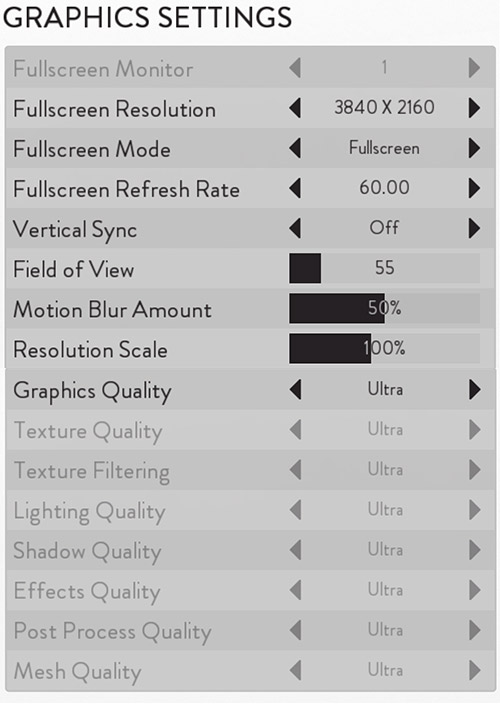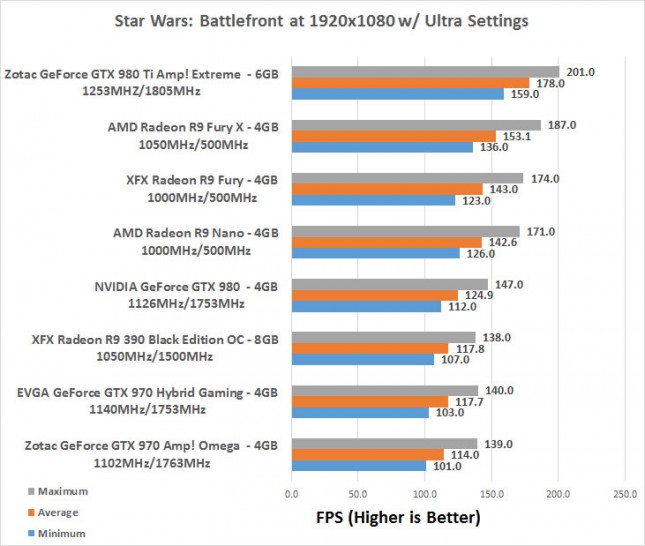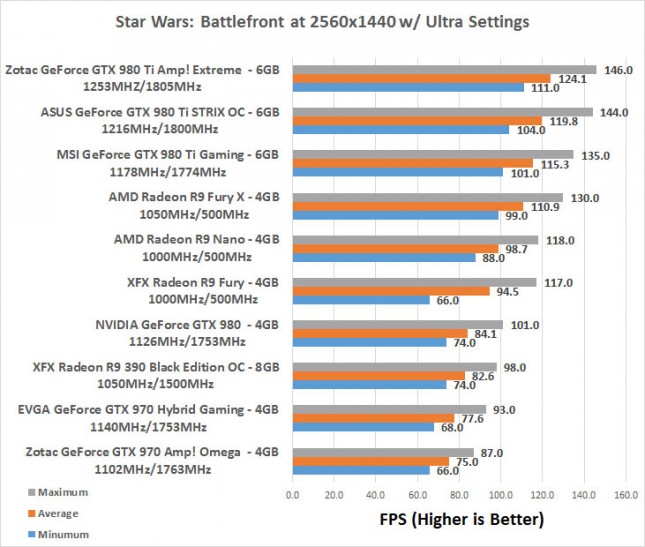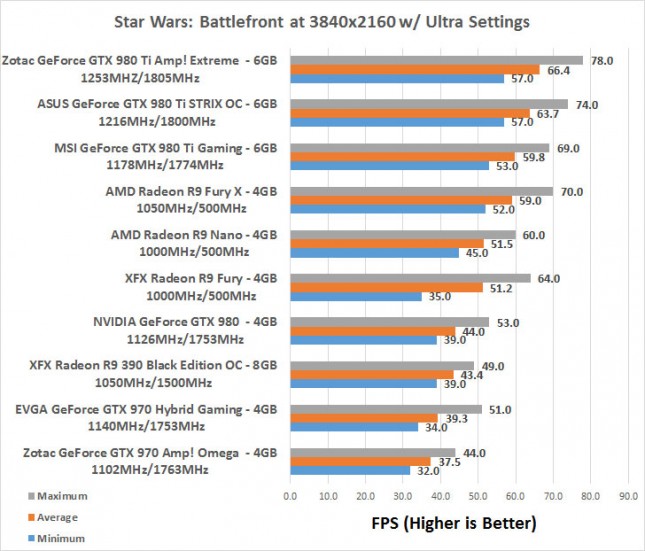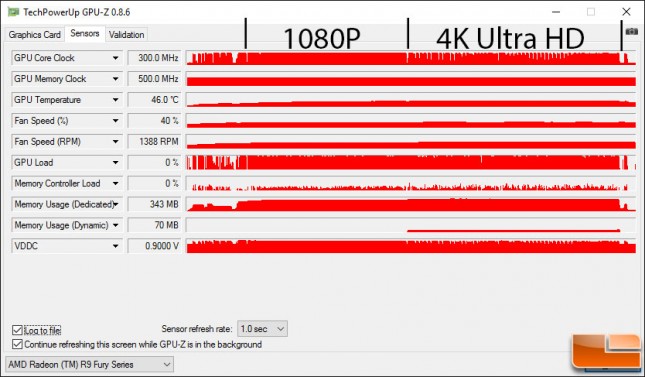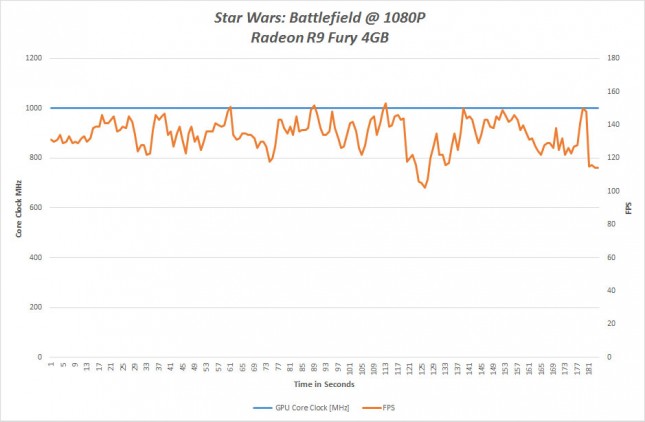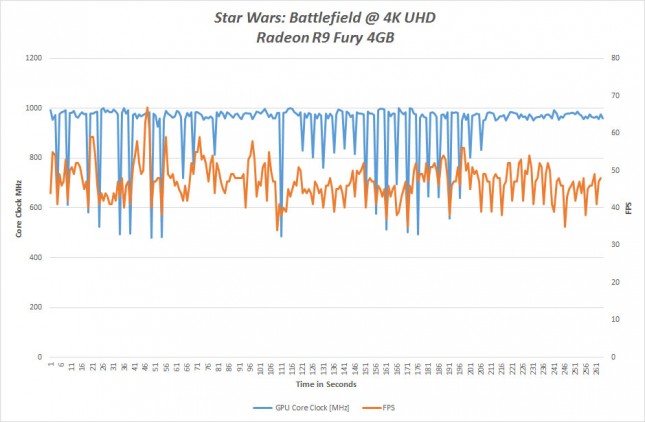XFX Radeon R9 Fury Triple Dissipation Video Card Review
Star Wars: Battlefront
Star Wars: Battlefront is a series of first- and third-person shooter video games based on the Star Wars films. Players take the role of soldiers in either of two opposing armies in different time periods of the Star Wars universe. Star Wars: Battlefront is built on the Frostbite 3 engine. Thief is the fourth title in the Thief series, developed by Digital Illusions CE and published by EA DICE/Disney Interactive on November 17, 2015.
We ran Star Wars: Battlefront with the image quality settings set at Ultra and VSYNC was disabled. We used FRAPS to benchmark with these settings on Battle on Tatooine.
1080P Benchmark Results: All of these high end cards were able to play Star Wars: Battlefront at 1080P Full HD resolution and never dipped below 100 FPS in the map that we tested. The XFX Radeon R9 Fury averaged 143 FPS and gaming on a 144Hz gaming monitor with this card was great at this resolution.
1440P Benchmark Results: When we played Battlefront at 2560×1440 the XFX Radeon R9 Fury card averaged 95 FPS, but we could notice that the game play wasn’t smooth and the minimum frame rate was dropping down to 66 FPS. This is more than the Radeon R9 Fury X and Radeon R9 Nano were dropping down to. Very strange performance.
4K Ultra HD Benchmark Results: When moving up to 3840×2160 the average FPS was 51 on the Radeon R9 Fury, but we were getting chop and stutters while gaming. The frame rate was dropping down to 35 FPS in the section that we benchmark in. We couldn’t explain why the XFX Radeon R9 Fury card was suttering, so we did a little digging.
We fired up the game on the XFX Radeon R9 Fury card and found that 1080P gaming was smooth, but when we changed the resolution to something higher than the cards performance got choppy. The GPU-Z capture above shows that as soon as we switched from 1080P to 4K gaming that the frame buffer filled up right away and started using dynamic memory and the core clock speeds started to drop all the time.
We used FRAPS and GPU-Z logs to record the core clock of the XFX Radeon R9 Fury video card versus the cards core clock speed and found that it remained pegged at 1000MHz when gaming at 1080P.
When changed the resolution to 3840 x 2160 (Ultra HD 4K) we noticed that the core clock was hardly ever at 1000MHz and at times performance was dropping down to 500MHz on the core clock. Many of the drops in performance were lined up exactly with where the core clock decreased for some reason.This odd behavior is something that we can not replicate on the Radeon R9 Nano or the Radeon R9 Fury X cards that we have. We have no other Radeon R9 Fury to test with, but AMD confirmed that they are seeing something similar internally and are looking into a fix. We aren’t sure what is causing it, but something is certainly going on and we are hopeful that AMD can come up with a solution. The AMD Radeon R9 Fury X and Radeon R9 Nano are fully enabled cores, so that might be why those cards aren’t having a similar issue. We sure hope it’s a driver/Windows issue and not in the hardware. Most games don’t exhibit this behavior, which is why it wasn’t noticed back in July 2015 when we posting the original Fury review as Star Wars Battlefront wasn’t out yet!


